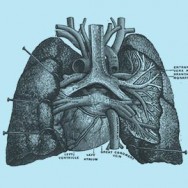
Malignant Pleural Mesothelioma Surgery
Background
Malignant pleural mesothelioma (MPM) is an aggressive cancer affecting the membrane covering the lungs and the inner side of the ribs (called the pleura). The primary cause of MPM is inhalation of asbestos. Living with a person who worked near asbestos also increases your risk. After being exposed, it can take more than 20 years before the cancer causes symptoms.
Symptoms include chest pain, breathlessness, weight loss, fatigue, fever, and night sweats. These symptoms can be caused by the cancer or by the accumulation of fluid around the lungs. Once MPM has been diagnosed, there is a poor rate of survival that ranges from less than one year to several years. However this length depends on the type of mesothelioma, the extent and spread, and the response to treatment. Patients undergo a number of scans and biopsies to determine the stage of the disease.
About the treatments
In a small number of patients with very early disease that has not spread treatments may be performed with the aim of curing the patient. In many other patients treatments can be used to extend the length of survival and to reduce symptoms as much as possible.
There are two surgical options for MPM that may be suitable in certain patients: Extended Pleurectomy/Decortication (P/D) or Extrapleural Pneumonectomy (EPP). P/D involves removing the membrane that lines the lungs and inside of the chest (the pleura). P/D may also involve removing the diaphragm and pericardium (the sac around the heart). EPP removes all of the same structures and also removes the lung.
Adjuvant therapy (treatments that are used in addition to surgery) include chemotherapy and radiation therapy. The combination of surgery, chemotherapy and radiation therapy is referred to as “Trimodality therapy”. There is evidence that trimodality therapy can improve survival to more than two years.
Recovery period
Recovery from EPP or P/D can be very slow. Respirators are used for the first few days to help patients breathe, and temporary drainage tubes are left in the chest to drain the buildup of fluid. Patients are monitored closely for complications. They generally stay in the hospital for at least two weeks after surgery. Total recovery is at least six to eight weeks, though is often longer since the remaining lung must be given time to take over all lung function.
Risks of the surgery
P/D and EPP operations have significant risks. EPP is associated with more complications than P/D. These complications include bleeding, infection of the lung, respiratory failure, pulmonary embolus (clots in the lung), heart problems (cardiac arrhythmias and heart attack), and death. The risk of early death is approximately 3% in P/D and 6% in EPP.
For more information please visit:
All patients should consult their cardiothoracic surgeon for specific information about their medical condition and surgery.

